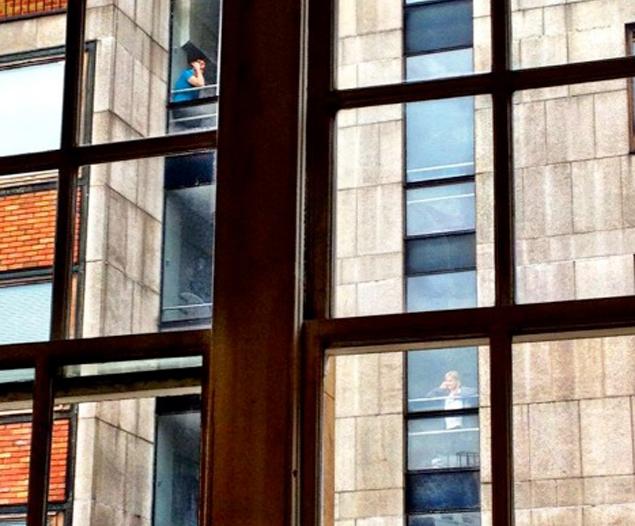City Rhythms

Our space and architecture is literally framed by ninety-degree angles around us delineating things like neighbourhoods, uses, ownership, private and public. As we move across these lines we establish a rhythm in space as we go from personal reflective realms to public interactive ones depending on our own tendencies. Often these individual rhythms clash in shared public space – how often do we find ourselves reading and reflecting quietly in a café to be perturbed by the boisterous conversations and laughs of others? Or conversely are we the ones enjoying ourselves with friends oblivious to the fact that we are acting to someone else’s annoyance? Clearly we share different rhythms in urban space in our struggle to find balance between our need to find connection as social creatures and desire for peace and isolation as spiritual begins.
Reflecting upon these themes Roland Barthes (French literary theorist and philosopher) offered us the idea of ‘idiorrhythmy’ - a way of living together where one recognises and respects the individual rhythms of others - from a series of lectures in Paris in 1977 entitled ‘How to Live to Together’. Using examples and drawing from unique and different living arrangements in literature, Barthes presents his world view where this socio-spatial struggle is reconciled through idiorrhythmy. Key to this shared living is the necessity of boundaries and frames which formed the structure for separating our many lives and in doing so making it possible for us to live together and alone.
Barthes describes an anecdote encapsulating his ideas; looking out from his window one day in France in 1976, he sees a mother walking her child hand in tow where “she walks at her own pace, imperturbably; the child meanwhile is being pulled, dragged along and is being forced to keep running, like an animal”. Witnessing this disharmony Barthes comments that “she walks at her own pace, unaware of the fact that her sons’ rhythm is different”.
Looking from the perspective of a window one day then as I ponder these themes in preparation for writhing this piece, I see two people, a man and a woman, framed in isolation by a tessellation of squares and ninety-degree angles. Gazing out from their individual perches on adjacent staircases two floors apart, their daily rhythms appear to have synched though unbeknownst to them in their shared isolation. From my gaze though I can briefly witness this moment of harmony. Only afterwards though, I consider the effect my role as witness (and now sharer) of this scene has in opening their personal moment. Lefebvre offers in this regard that “in order to understand the city, and its ceaseless contrapuntal rhythms, one must situate oneself simultaneously inside and outside of it”. Taking all this information and coming to terms with it, it appears more clear to me now how we can navigate our shared urban spaces and find a way to live together and live alone.
